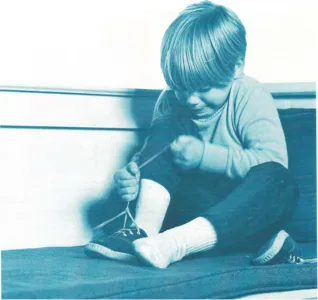Portrait of the school-age child

It is extremely easy to see how much 8- year-olds have changed since
they were 5. It is not so easy, looking at them when they are 5, to
realize how much they will have changed by the time they are 8. It is,
however, important that parents of children entering school be able to
look ahead. Parents should be aware of the many changes that will occur
in their children during the
early school years. They should also understand their children’s
physical, mental, emotional, and social needs so that they will be
better able to meet those needs.
Social development
At this age, for the most part, boys play with boys and girls play with
girls. When
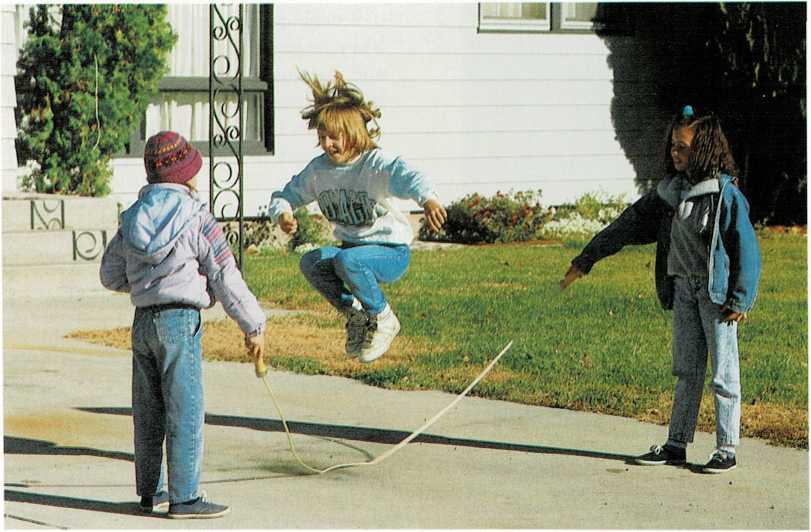
Between the ages of 5 and 8, girls usually play only with other
girls, and boys with other boys. A favorite game of school-age girls
is jumping rope.
friends of the same sex are not available in the neighborhood, a child
usually finds playmates in school and invites them home to play, eat, or
stay overnight.
Children between 5 and 8 years old have lots of initiative. They are
interested in accomplishments and want to do things well. They need
encouragement and respect.
School-age children like the feeling of responsibility—of doing
something needed to make the home operate smoothly. Parents may have
difficulty finding things for children to do. Convenience foods make
helping with meals less important. Automatic dishwashers may eliminate
the need to wash and dry dishes. Power lawn mowers are too dangerous for
school-age children to use, and so children may not be able to cut the
grass. However, it is extremely important for school-age children to
have some responsibilities. These tasks, of course, should be ones
children of this age are capable of handling— such as making their own
beds, cleaning their rooms, setting the table, or putting groceries
away.
When children start school, an important person enters their
lives—their teacher. The teacher is often the first adult friend
children make on their own. If they like their teacher, they want their
parents to feel the same way. Most children are aware of every detail of
their teacher’s appearance and respond to every smile or frown.
Imitation
During these years, it is only natural for girls to imitate and want to
be like their mothers, other women, and older girls. Similarly, boys
imitate and want to be like their fathers, other men, and older boys.
At one time, little girls were expected to be interested only in
activities labeled as feminine, such as playing with dolls and jumping
rope. Little boys were expected to be interested only in activities
labeled as masculine, such as playing baseball and football.
Today, girls and boys, as well as their parents, are comparatively free
of the stereotype roles that society once demanded of them. Now the
choice is up to the individual. Games and other activities no longer
bear sexist labels. This can be noted in ev-
erything from the advertising and packaging of games, toys, and play
materials to the clothes children wear.
A factor contributing to the diminishing of sexism, especially in the
United States, is that more than 50 per cent of mothers of school-age
children work outside the home. Children in these families see both
parents go off to work. And at home, children see them share household
duties as well as the responsibilities for their youngsters. The
increase in households with a single parent has also added to the
changes in the duties and responsibilities of parents.
Inevitably, little girls become women and little boys become men.
Meanwhile, children are being increasingly encouraged to make highly
personal choices, without sexist labels. These choices will help
children develop interests and competencies that will lead to fuller,
more satisfying lives.
Fathers and school-age children
The quality of the relationship between a father and his school-age
child is important. It is possible that both boys and girls will have
almost all their important dealings with women until they reach the
secondary schools. This predominantly female world is not good for boys.
Boys need as many experiences with men as possible. They need men,
especially a father whom they admire, to set a pattern for them. Boys
grow into manhood in part through their physiological maturing, but also
through seeing how men act and talk and work and plan, how they react to
each other, and how they interact with women. The companionship of men,
of a good father in particular, is an essential ingredient in a boy’s
growth to manhood.
Girls, too, need the companionship of their fathers. A predominantly
female world is not good for them either. Fathers help girls know what
men are like and how men respond to different situations.
Visits away from home
Through visits away from home, schoolage children gradually develop
social graces and independence. They try out new foods and become
accustomed to unfamiliar routines. They learn new skills by sharing
family chores in other households. They make
68 \| The School-Age Child: 5 to 8 years friends with children in other
communities. Children also test and develop skills in relating to people
away from home. They learn that all mothers are not alike, nor are all
fathers, big brothers, or little sisters. Visits to homes of friends for
playing, eating a meal, or spending the night all add to social
development.
Before allowing a visit away from home, parents should consider their
child’s and the hosts’ needs. Do the hosts like and want the child? Is
the host family reasonable and flexible? Will they be patient as the
child tries to fit into their situation? Have they been told of the
child’s special needs? If the child is on special medication, are they
willing to supervise the dosage? Is the child a bed-wetter—a condition
that would be acceptable in some households and rejected in others? Does
the child have occasional nightmares? Is the child allergic to certain
foods or materials? Prospective hosts should be told about any unusual
characteristics, so
that they have a chance to reconsider if the child’s needs seem too
great for them to meet.
Making choices
During the school-age years, a child learns to make choices—within
limits. For example, a child may have pronounced preferences in food.
Some children eat vegetables only when they are raw. Some children
prefer fruit juice rather than fresh fruit. So long as it is reasonably
convenient and the child is eating nutritionally balanced meals, allow
these choices. The experience adds to personal development.
Clothing presents more opportunities to learn how to make intelligent
choices— within limits. At bedtime, for example, allow the child to
decide what to wear the next day. You may also want to let the child
pick out some new clothes at the store. At this age, the child may start
to be caught up in fads. Sometimes, gym shoes are the impor-
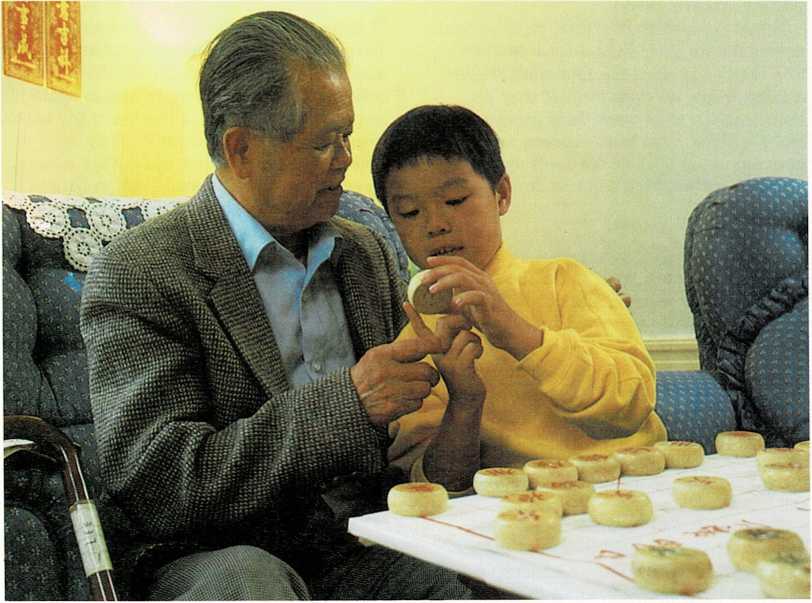
Visits away from home—for a day or overnight—help the school-age
child develop socially. First visits are often with a grandparent or
other relative.
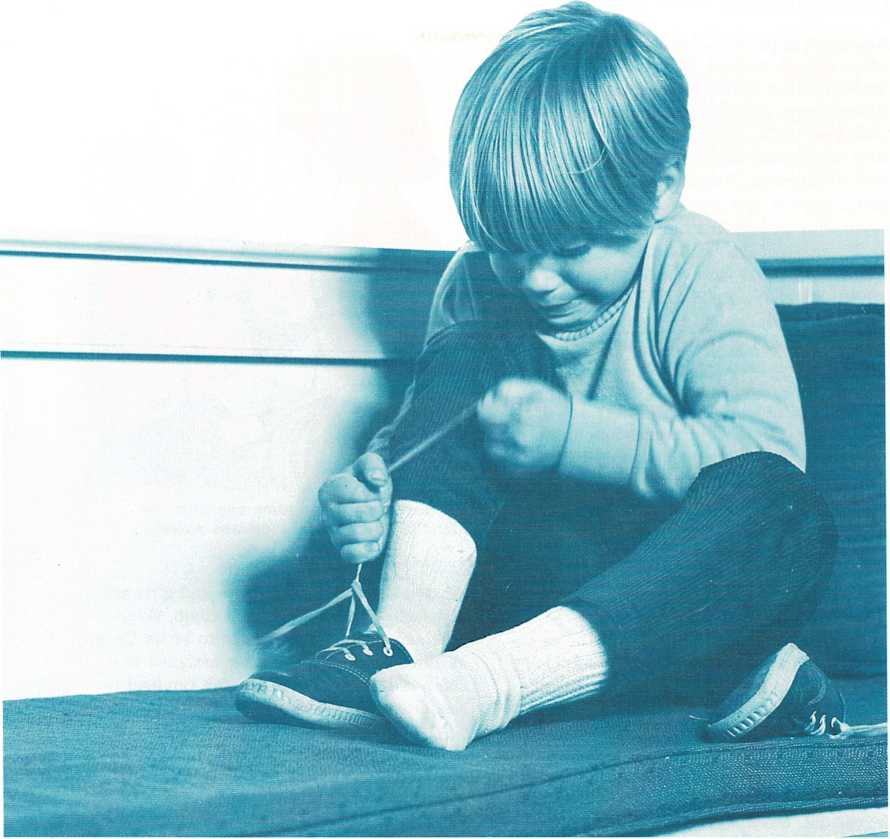
Learning to tie shoes is a major achievement. Shoe tying requires
small muscle control and good eye-hand coordination.
tant symbol, and the brand name or label may be as important as the
style. For girls, “hair things”—bows, barrettes, or combs— may be
the “in” symbol. Again, respect the child’s choice, within reason.
Allowances
Giving a regular allowance may be a worthwhile educational experience
for a child. An allowance gives a child a realistic, firsthand
experience in planning how to spend money and how to get full value for
it. An allowance also provides the child with a natural opportunity to
learn arithmetic and to begin to develop a sense of logic.
The child may buy unwisely at first, or may spend all the money
immediately, forgetting that no more will be forthcoming for several
days. But this may help the child learn to choose wisely and spend
carefully, because an allowance also involves making choices.
You may wish to start your child with a small weekly allowance and give
the same sum on the same day of each week. As your child learns the
possibilities and limitations of the allowance, and as your child’s
needs multiply, increase the amount. Your child will become ready to
take on the additional responsibility of managing the money needed
for school expenses—bus fare, school supplies, or milk money. As you
increase the amount of the allowance, you may want to discuss ways of
budgeting the allowance with your child. Help the child figure out how
much must be spent each week on essential expenses. You may also want to
talk about ways of spending any extra money.
An allowance should be considered a child’s share of the family income,
and therefore should be no more than the family can afford. An allowance
should be considered the child’s own money. Do not control your child’s
buying. Let the child make mistakes and learn from those mistakes. Do
not insist that a young child save part of the allowance. A savings
program will take on importance when the child has something to save
for. Never withhold an allowance because of disobedience, poor grades,
or unwise spending. An allowance is not a bargaining tool to guarantee a
child’s good behavior, nor should it be considered a bribe.
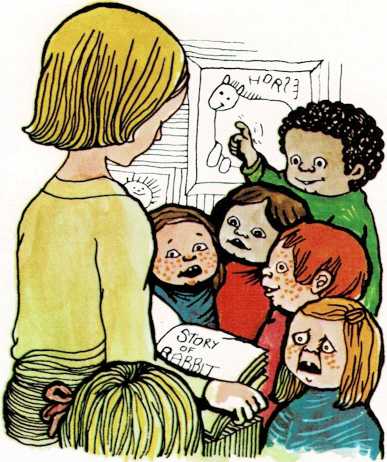
Primary-grade classrooms can often be identified by rows of
toothless smiles.
Motor development
“Slow but steady” characterizes the development of motor skills during
the school-age years. For example, a 5-year-old is usually not ready for
writing. The small muscles that control fingers and hands are not
developed well enough. Writing also requires that the eye and hand work
together. This eyehand coordination is not well developed in a
5-year-old. Even 6-year-olds still find writing difficult.
Seven-year-olds usually concentrate hard when writing. They grip the
pencil tightly and usually hold it close to the point. Their letters are
uneven in size. By the time they are 8 years old, their eye-hand
coordination and the small muscles in their hands and fingers are much
better developed. As a result, they can write more evenly and easily.
Physical maturation and the ability to concentrate on a purpose also aid
children’s writing.
Children’s large muscles are also still developing. Girls at this stage
are better coor
dinated than boys. Both boys and girls are physically active—they run,
climb, skip, hop, and jump, and they like to be on the go at all times.
Too long a time assigned to a chair and desk without a break can lead to
restlessness and boredom.
Other physical characteristics
Growth in height and weight during the years from age 5 to age 8 is also
slow but steady. The average child adds 2 to 2.4 inches (5 to 6
centimeters) in height and 5 or 6 pounds (2 or 3 kilograms) in weight
each year. For more information, see [Growth] in For Special
Consideration.
A distinguishing characteristic of the school-age child is a big
smile—and the wide-open spaces that show where the primary teeth have
fallen out to make room for the permanent teeth. Six-year molars are
breaking through, and permanent incisors are beginning to appear. For
more information, see [Teeth and teething] in the Medical
Guide.

